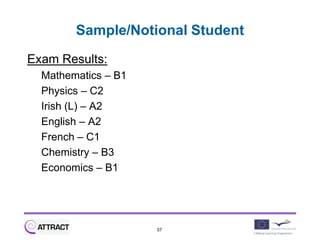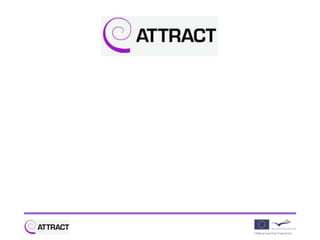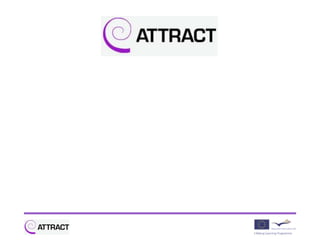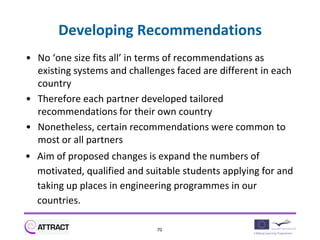The document outlines the formal barriers to engineering education at the tertiary level, highlighting challenges such as high school systems, university entry requirements, and socio-economic factors that limit access to engineering programs. It details a three-phase analysis involving surveys, a comparison framework, and a report on the identified barriers, emphasizing the need for structural changes and tailored recommendations to enhance access and encourage diversity in engineering education. The recommendations focus on admission standards, educational structure adjustments, and addressing socio-cultural issues to foster a more inclusive STEM environment.
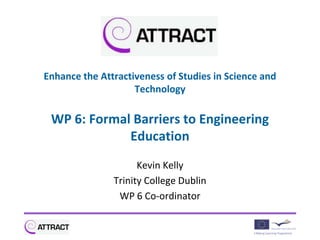
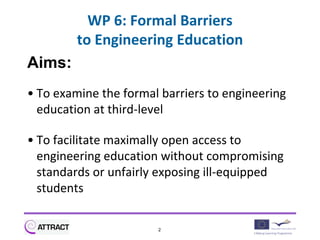






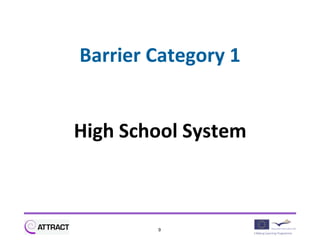

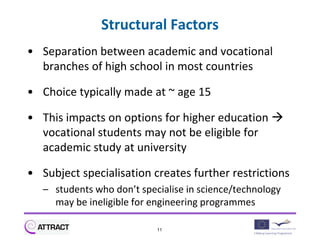





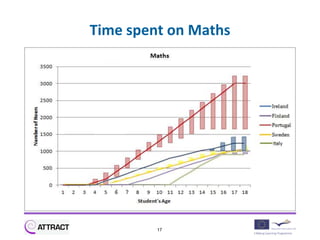
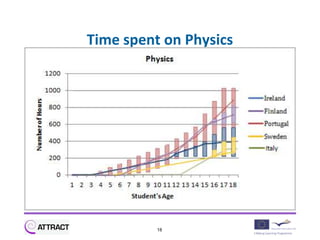


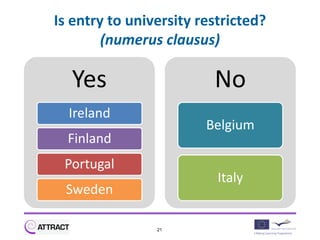




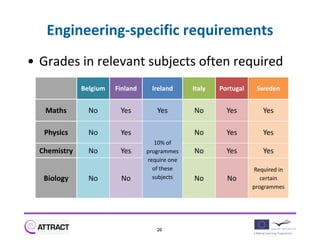

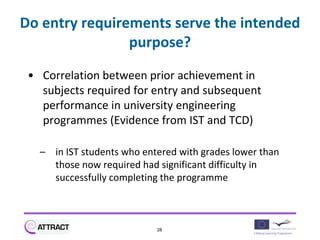




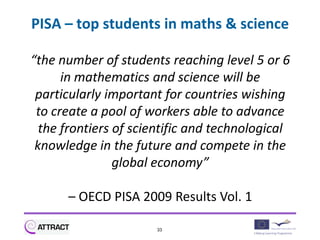
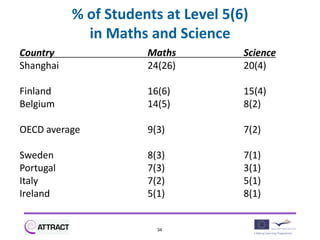


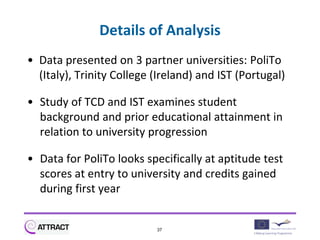




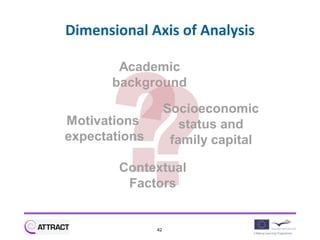

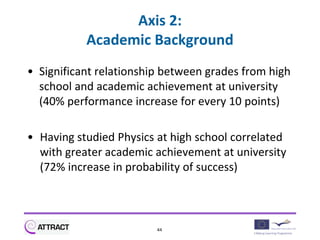

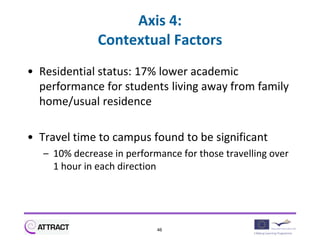




![Logistic Analysis of Performance
Input Weighted Logistic
Probability
Variables Sum Function
[0 / 1] [- ∞, + ∞] [0 - 1]
[0 - 100]
51](https://image.slidesharecdn.com/wp6stockholm-121028155834-phpapp02/85/Formal-Barriers-to-Engineering-Education-51-320.jpg)





